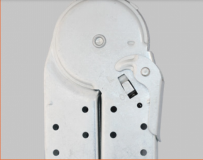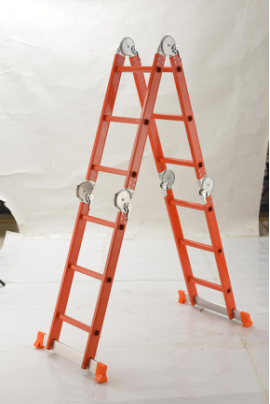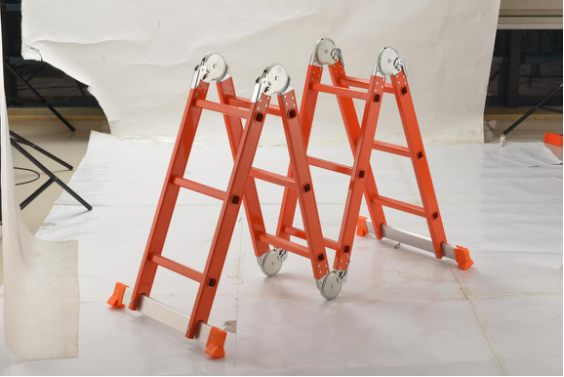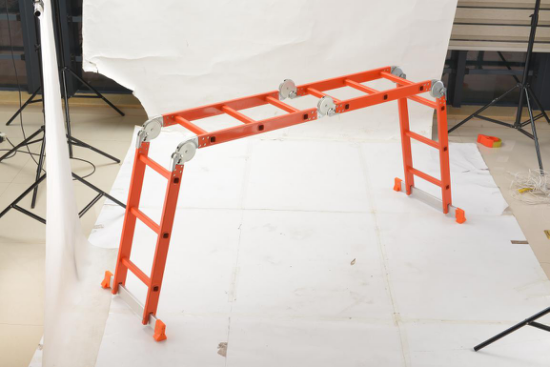1. Make printing chromatograms using chromology
Throughout the color reproduction process, it has gone through three processes: color analysis, color transfer, and color combination. The correctness of the color change control in each process is directly related to the final quality of the printed matter, so a color standard, that is, printing chromatogram, is required to regulate various hues in the printing process. Printed chromatography uses the three primary colors of yellow, magenta, cyan and black, mixed and stacked at different ratios or dots to form a book of various color patterns for people to design, copy the original, ink deployment, etc. Check with.
Four-color chromatography uses yellow, magenta, cyan and black inks with different dot area percentages (generally only 0, 10%, 20%, 30%, 40%, 50%, 60%, 70%, 80%, 90%, 100% eleven dot levels, and can also be divided by 5% equal dot level) overprinting and overlapping, and arranged in a certain order to compose, it has various processes for electronic color separation, proofing and printing Important reference and guidance role. The spot color in printing is a color ink that has been mixed, and has no direct relationship with Y, M, C, and K. Therefore, a standard set of primary color inks is first defined to produce a variety of different mixing ratios. Each color swatch is marked with a scalar representing the mixing ratio of primary colors, so that people can use three primary colors ink to mix spot colors of various colors. This is spot color chromatography.
At present, Pantone color matching chromatography of American Pantone Company is widely used in the world. However, the printing chromatogram uses colors to represent colors. Its production is usually affected by many factors such as ink, paper, printing technology and equipment. Therefore, the printing unit should make its own special according to the raw materials, production technology and equipment conditions used by the factory. Printed chromatography.
2. Use chromology to measure color and color difference
Color measurement in color printing can be roughly divided into three types: contrast visual method, density measurement method and chromaticity measurement method.
In the printing process, the contrast visual method is used to measure the color, mainly relying on experienced operators to evaluate the color of the manuscript, signal bar, and printed sheet by contrast visual method with reference to the standard color rate. Due to the influence of the observer's own physiological and psychological factors, the accuracy of the comparative visual method is relatively poor. But because it does not need to be equipped with delicate measuring instruments, it is still widely used in the general printing work.
The density measurement method is a method of measuring the tone and color value of the color by using the optical density value. In the color printing process, the density value can well reflect the proportional relationship and superimposition performance of the three primary color inks, and the detection equipment is simple, so it is widely used. However, using optical density as the monitoring and measuring method of the printing process, the size of each monochrome ink can only be obtained from the control bar, and the color error information cannot be obtained directly from the image, so it is difficult to communicate with the printing customer, and it is inconvenient Accurate control of color reproduction, so density measurement is only an indirect color measurement method.
Chromaticity measurement method is based on the principle of chromatics, using the color of the important part of the printed image as a monitoring point, directly measuring the tristimulus value of the color, and obtaining color chromaticity information. This method can accurately express the color difference between the standard sample and the measured sample and the required amount of proximity, without the need to add additional test standards or control strips. However, it has not been promoted and popularized at present, mainly because of the high price of the instrument and high color theory requirements for users. As a large-scale cigarette label printing company, most of our products involve spot color printing. Due to the good use of chromaticity measurement to control chromatic aberration, few customers have complained about color in recent years.
In the process of color printing and copying, not only to understand the three attributes of color, but also to understand the difference between colors, in order to compare and distinguish colors, this is the color difference. The unit of color difference is NBS, which is the abbreviation of National Bureau of Standards. At present, the universal color measurement standard for all countries in the world is the CIE1976Lab uniform color space, which was proposed by the Canadian Witzersky at the eighteenth CIE conference in 1975. Where L represents psychological lightness, a and b represent psychological chromaticity, and the color difference is represented by â–³ E, when a is a positive value, it means reddish, and when it is negative, it means greenish; when b is a positive value, it means Yellowish, when it is negative, it means bluish; when L is positive, it means lighter color, otherwise it is darker. The color difference value â–³ E is generally less than 3, the color difference is not very big, but it is also affected by the dark and light colors and the printing material.
3. Make use of color science to prepare spot color ink
Ink is the colored substance of printed matter, it is a mixture of coloring material, connecting material, filling material and co-solvent, etc. It is a kind of complex colloid. Ink preparation refers to the process of mixing one or more inks together and adding certain auxiliary materials to meet the printing and color requirements. Any color can be obtained by mixing three primary colors in different proportions.
3.1 The rules of ink color preparation
(1) The preparation of spot color ink should be done under the standard light source D65. If it is daytime, it can be done in the north window with sunlight.
(2) The three primary colors of ink are mixed in equal amounts to obtain black approximately. If you add different proportions of white ink or diluent, you will get different levels of gray ink.
(3) The three primary colors of ink are mixed in different proportions to obtain intermediate or multiple colors of different hue.
(4) Two kinds of primary color inks are mixed in equal amounts to obtain intermediate colors; mixed in different proportions can obtain intermediate colors of different hue.
(5) The more color hue types used in color matching, the worse the brightness. Add black ink to any hue ink, the brightness value decreases; add white ink, the brightness increases.
(6) Pay attention to the effect of the paper used, the color sequence of the overprint, the color of the illumination light source on the ink color, and the color change before and after the print is dried.
(7) Complementary colors can be used to correct color cast, but only when the lightness value of the ink is too high.
(8) Minimize the use of different types of original inks to reduce the effect of complementary colors.
(9) Pay attention to the effect of ink viscosity on hue.
(10) Before more complicated spot colors are matched, a small amount of trial matching can be made to determine the ratio, and then the amount of ink used can be allocated according to the ratio to avoid waste.
3.2 The deployment of dark ink
Use only three primary colors or intermediate color primary inks without any diluent for ink preparation, collectively called dark ink preparation. The deployment of dark ink is equipped with the following steps:
(1) Determine which primary colors are included in the original color sample and discharge the main color, auxiliary color sequence and the approximate proportion of each color ink.
(2) According to the inked area of ​​the printed matter, ink coloring power, printing plate depth, paper performance, ink viscosity, printing quantity and other factors, determine the amount of preparation.
(3) Add ink in the order of big to small according to the proportion of blending. Weigh the primary color with the most content first, and then weigh the secondary color with less content, and then add the secondary color ink to the primary color ink several times, and blend it evenly.
(4) After comparing the color comparison and adjusting the proportional relationship of the three primary colors, after adjusting to the same, adjust the printing suitability through printing aids.
(5) Record the proportional relationship of each primary color component used, in case of reprinting or insufficient ink volume, to ensure the consistency of recoloring ink color.
3.3 The deployment of light-colored ink
Any spot color ink prepared by adding white oil, white ink, diluent, lightening paste and other dilute inks to the original ink is called light color ink. The preparation of light color inks is mainly based on dilute inks, supplemented by primary color inks. According to the requirements of the transparent condition of the color sample, select the appropriate diluent. Generally, the pale ink used for dot printing should use a transparent diluent. White ink can be used as the light-color ink diluent for solid printing. The deployment process is as follows:
(1) Determine the relationship between the type of primary color ink used and the ratio of diluent according to the primary color sample control chromatography.
(2) Weigh the diluent according to the required amount of ink first, and then gradually add the selected primary color ink. If there is more than one primary color ink, add a large amount first and then a small amount.
(3) Scratch the small color sample and check it as it is, and constantly adjust the amount of original ink. After conforming to the original sample, adjust the printing suitability through printing aids.
(4) Record the proportional relationship of the raw materials used.
Blending light-colored inks and mastering the dilute degree of inks is the key. If the ink color is too dark, the printing ink layer is required to be thin, which will cause the "pattern" or the field color is not bright; if the ink color is too light, it needs a thicker ink layer to meet the color requirements during printing, so it is easy Causes problems such as "pasted plate", incomplete drying, and sticky back.
One of Aluminum Ladder - Folding Ladder is very popular all over the world because of it`s special and traditional design.It conforms to EN131. Strong aluminum construction with safety huge lock steel hinges .It`s pretty steady with twin stabiliser bars featuring large rubber feet.
Folding ladder can be used by many shapes while it`s easy to fold and extend .The max load of Folding ladder is 150KGS. You can climb to roof by it`s straight ladder . You can use it as bridge while tools can be putted on the platform . And it`s can be A type shape ladder . Which types of Folding ladder you choose .
New craft of the Folding ladder : Spry color -- Choose the color what you like .
Our Folding ladder would be the most convenient assistant for your life ..
More details as follows :

Accessories:







FAQ
Q: Are you factory or trading company ?
A: We are factory , exported foreign over decade with rich experiences .
Q: We can change the color of the rubber cover ?
A: yes , the regular is black , you also choose other color .
Q:What`s the MOQ ?
A: 50 PCS.
Q: Can I have a sample ?
A: It`s ok .
Q:What`s your price ?
A: It`s depends on your demands, quantity , we can offer you lowest price .
Q:What`s your delivery time ?
A: Sample order : 3days , bulk order : 23-25days .
Q: Can we use our logo or brand on the package ?
A: yes , OEM is ok .
Q: What`s the payment :
A: (1) T/T: 30% deposit be paid in advance , the 70% of total payment see the copy of B/L.
(2) L/C it`s ok .
(3) Cash also ok .
More inquires or questions , plz feel free to contact us !
Welcome to visit our factory !
Folding Ladder
Folding Ladder,Aluminum Folding Ladder,Folding Ladder With Color,Folding Ladder With Hinges
Yongkang Aoyi Industry&Trade Co., Ltd. , https://www.aoyiladder.com